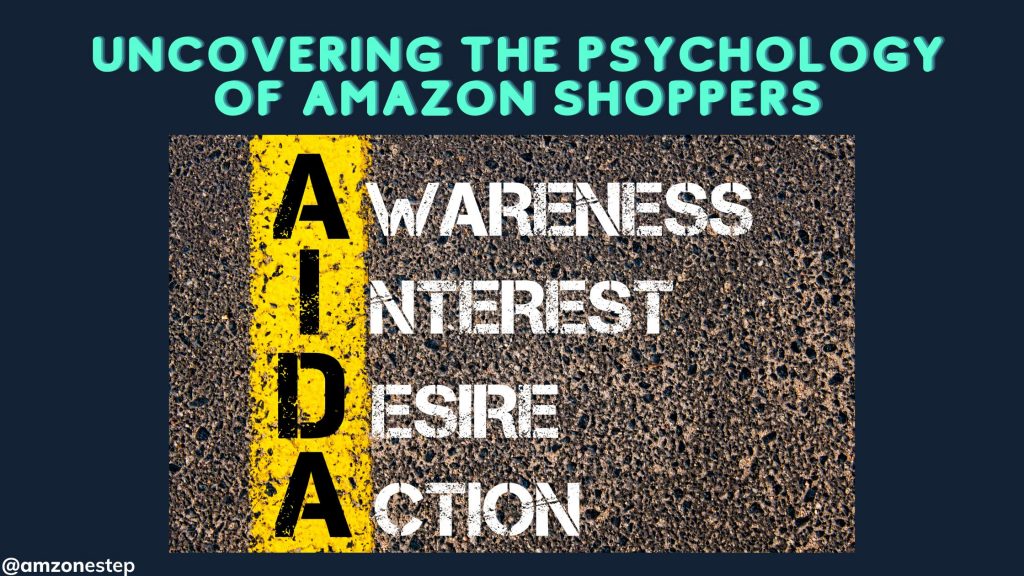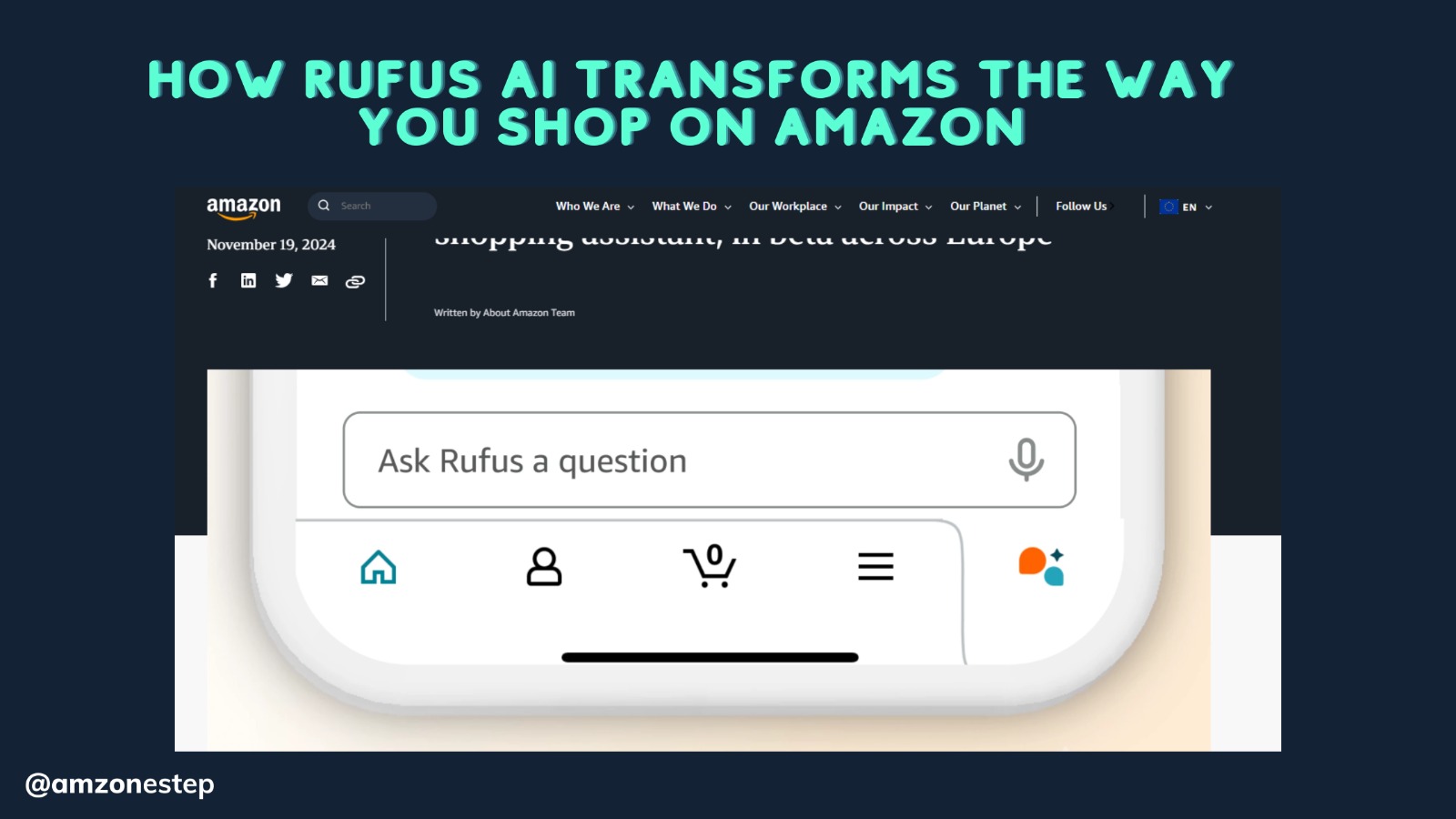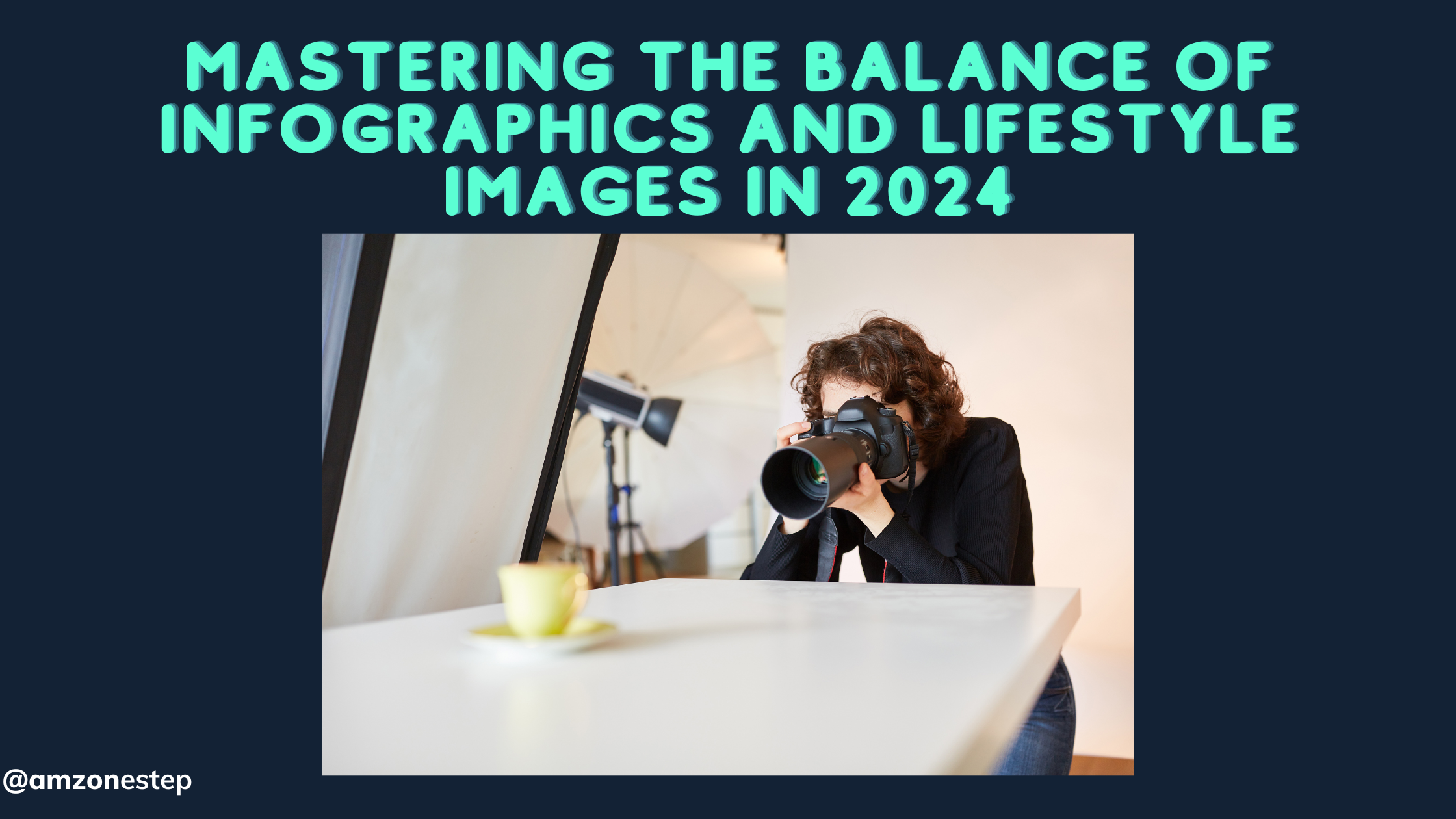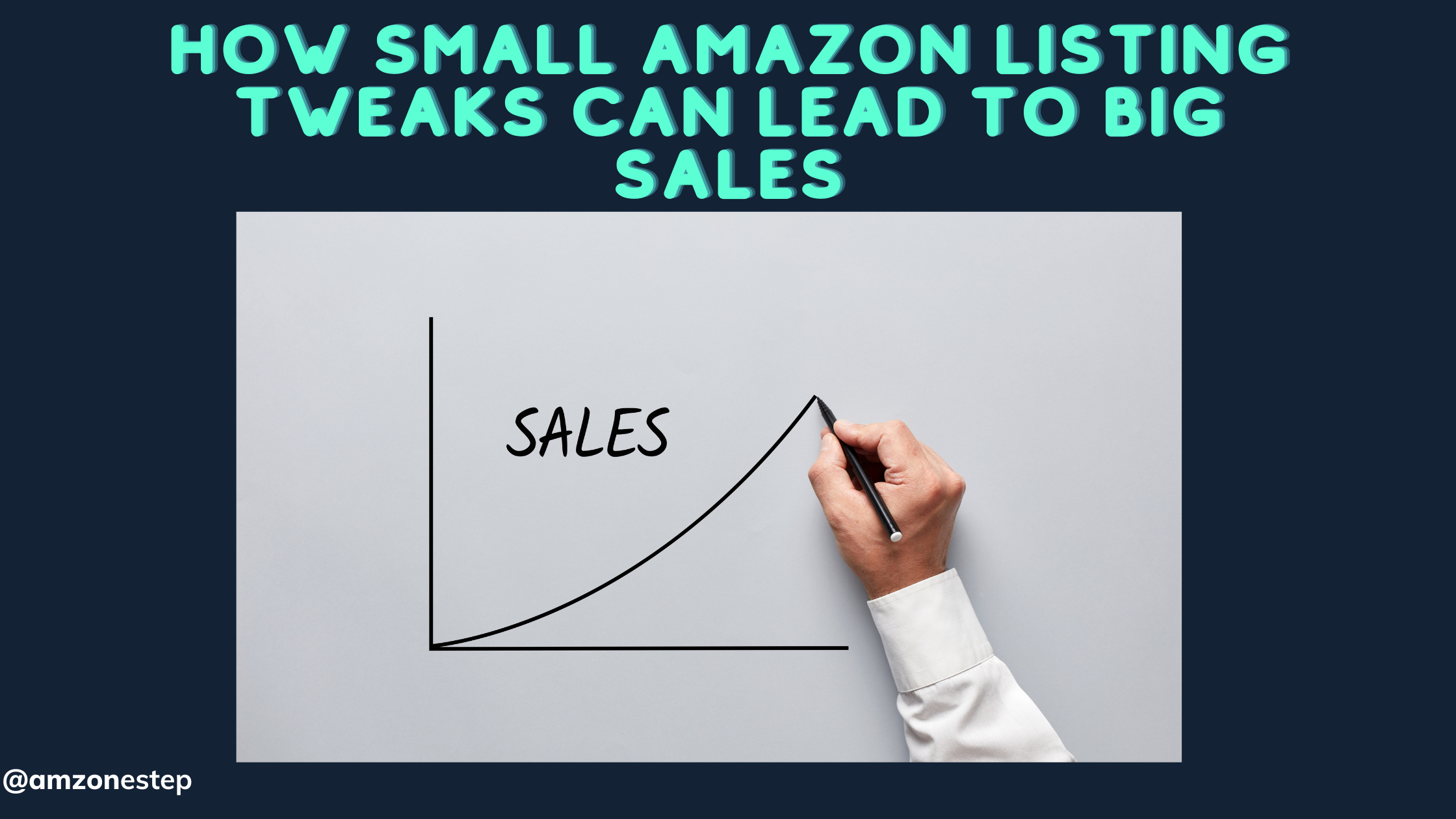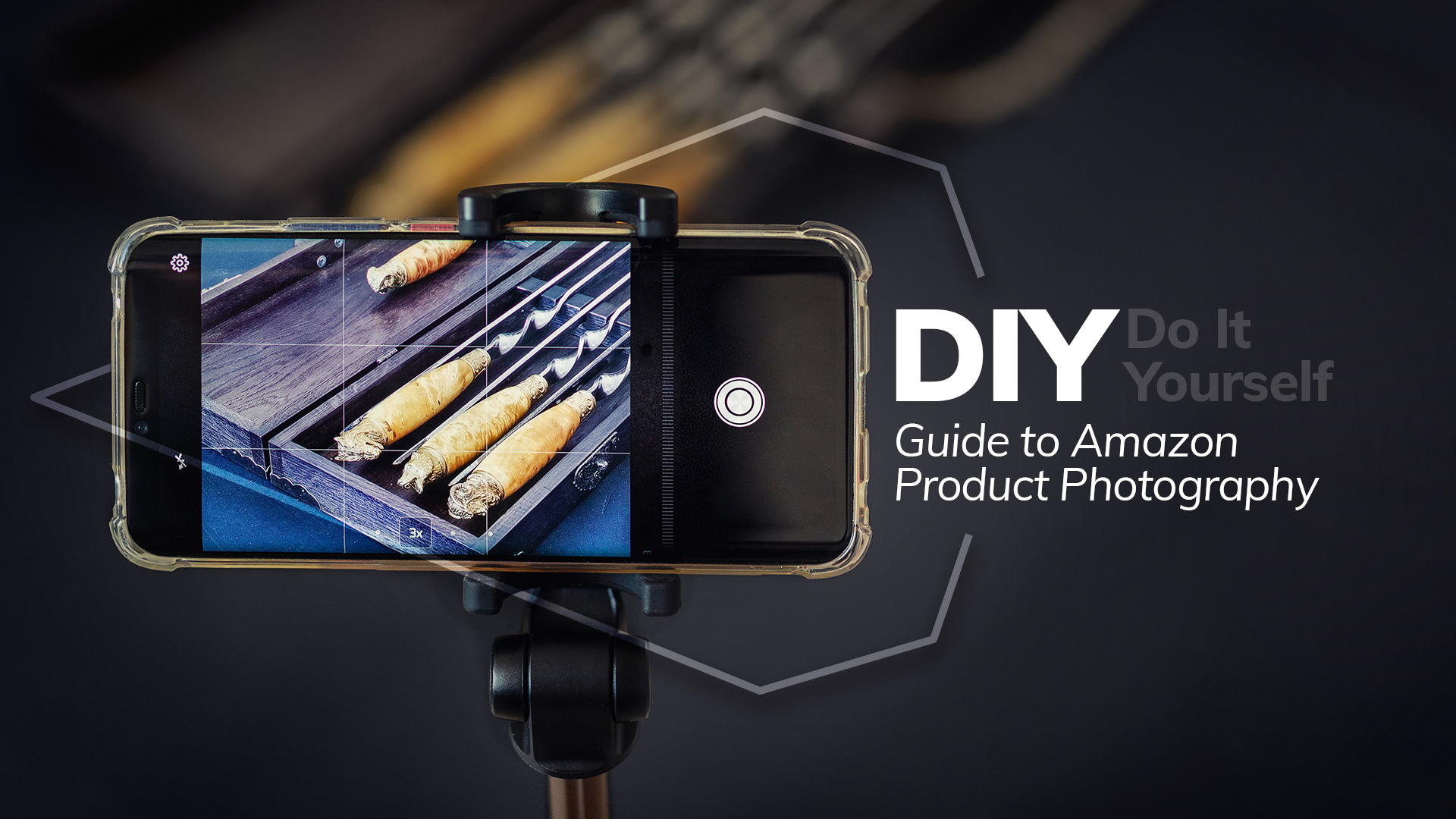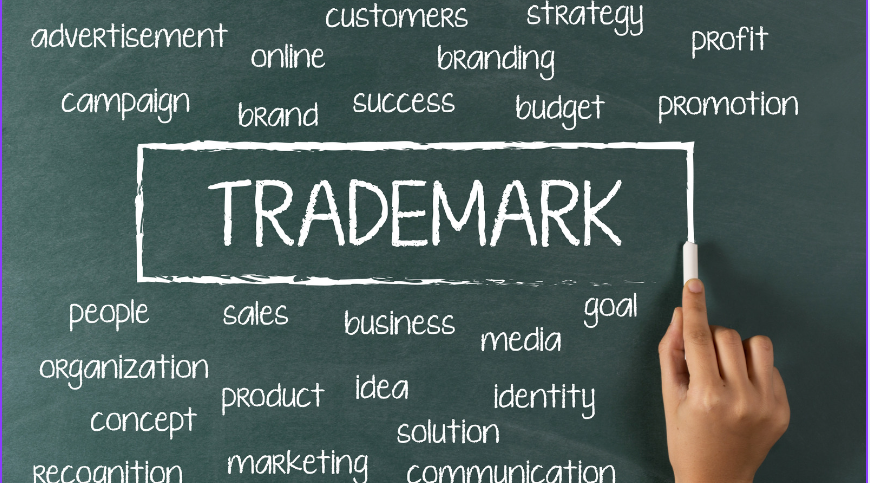Understanding Amazon customers ‘ psychology is the secret to making compelling product graphics that encourage purchases. This piece explores the psychological aspects that affect consumers’ Amazon purchasing decisions.
These data may be used to build methods for designing product images that appeal to consumers and encourage purchases.
The Importance of Product Visuals

Visuals are essential to attracting potential consumers’ attention and promoting conversions in the rapidly expanding world of e-commerce. The value of attractive and compelling images should be emphasized when selling things on Amazon. Here, we look at the importance of product images for Amazon platform success.
Read More: Creating Impactful Amazon Ads with AI-Generated Visuals
Connection Between Visual Presentation and Consumer Perception
E-commerce performance depends critically on the relationship between Amazon’s aesthetic display and consumer perception. How things are graphically displayed on the Amazon platform may significantly impact how customers view and judge those products.
1. Attention and Initial Impressions
Visual presentation is essential in grabbing the attention of prospective clients and creating a positive first impression. Making quick decisions based on first impressions is common when customers browse through Amazon’s enormous range of items.
An excellent first impression may be made immediately with the help of eye-catching thumbnails, appealing product photos, and other visually arresting features. When a product is aesthetically distinctive, consumers are more inclined to investigate deeper and consider it.
2. Perceived Quality and Authenticity
Consumers evaluate a product’s perceived quality and authenticity using visual signals. A sense of superior quality is influenced by high-resolution photos that faithfully depict the object from all perspectives, accentuating its subtleties and characteristics.
Consumers can be given confidence by clear, expert, and visually attractive visuals that reassure them that the product meets their expectations. Conversely, poor-quality or poorly-presented images may doubt the product’s legitimacy and turn away potential customers.
3. Trust and Credibility
Consumers’ perceptions of a seller or brand can be strongly influenced by their visual display. Building credibility and developing trust may be helped by consistent and expertly executed visual branding, including logos, packaging, and general aesthetics. These two factors are crucial in an online marketplace like Amazon, where customers cannot physically inspect things before buying them.
Read More: 5 Best Ways to Highlight Amazon Product USPs
How Images Influence Online Shopping Decisions
On websites like Amazon, in particular, images significantly influence purchasing decisions. Images can affect how people behave and what they decide to buy on Amazon in the following ways:
1. Branding and Differentiation
Images help to distinguish and recognize brands. Shoppers can remember and tell a company apart from rivals using consistent visual branding features like logos, color palettes, and design styles. Images consistent with a company’s identity help generate a coherent brand experience that affects customer perceptions and fosters brand loyalty.
2. Mobile Shopping Experience
As the popularity of mobile shopping increases, photos are essential to enhancing the mobile user experience. Visually attractive thumbnails are crucial for grabbing attention, persuading users to click, and continuing to explore screens with limited real estate.
Clear, appropriately sized images must load quickly for smooth surfing and swift decision-making on mobile devices.
Advanced Techniques for Product Visualization on Amazon
1. Using 3D Images and Augmented Reality (AR)
Amazon sellers may use these tools to improve the product visualization experience. Customers may rotate and see the goods from different perspectives using 3D pictures, providing a more immersive and engaging experience.
Customers are more engaged and confident in buying because of this dynamic representation’s assistance in better comprehending the product’s size, design, and characteristics.
2. The Role of Infographics in Product Descriptions
They are practical tools for presenting detailed information that is visually appealing and understandable. As they convey essential information and advantages in an orderly and concise manner, they are crucial to Amazon product descriptions.
Infographics may get vital information to potential buyers by displaying product details, features, comparisons, and usage instructions. Infographics may attract attention, improve understanding, and enhance the visual appeal of the product description by utilizing aesthetically attractive symbols, pictures, and text.
They make it possible for customers to swiftly take in the information they need, ensuring that they are aware of the value the product offers. Customers can quickly scan information with infographics, improving the browsing experience while saving them time and effort.
The Psychology of Colors in Amazon Product Photography
Understanding the psychology of colors may affect your Amazon listings’ success regarding product photography on Amazon. Consumer perceptions and emotions are significantly influenced by color.
In this article, we’ll look at the value of color theory in marketing and offer advice on picking the ideal color scheme for your Amazon items.
Color Theory in Marketing
Color theory studies how colors influence people’s feelings, actions, and perceptions. Different colors express various emotions and messages, affecting how consumers make decisions. Colors are deliberately utilized in marketing to elicit particular reactions and build associations with companies or products.
Choosing the appropriate color scheme for your product photos on Amazon may be aided by understanding the psychological effects of color.
Read More: Tips For Taking Your Product Photography On A White Background
Amazon Packaging and Branding in Product Visuals
Branding and packaging are essential elements of Amazon’s product images. They help build recognition for your brand, shape how people perceive it, and impact what people buy.

1. Unboxing Experience
The importance of the unpacking experience in e-commerce has grown. A memorable and sharing customer experience may be improved by attractive and well-designed packaging. Consider including graphics demonstrating the unwrapping process or incorporating personalized touches to generate enthusiasm and make a lasting impression on clients.
2. Customer Reviews and Brand Reputation
Customers with positive packing experiences are likely to submit positive reviews and refer others to your brand. Your branding efforts can be strengthened by encouraging customers to post pictures of unboxed purchases on social media.
These client testimonials, which sometimes include images, act as social proof and boost your company’s reputation on Amazon.
Case Study: Successful Amazon Product Visual Strategies
In this case study, we will examine the effective Amazon product visual approaches used by a made-up company called XYZ Fitness for their fitness tracker. XYZ Fitness used a strategic approach to product images to attract customers’ attention, effectively communicate product benefits, and increase conversion rates on the Amazon marketplace.

1. Attention-Grabbing Thumbnail Image
In a highly competitive business, XYZ Fitness understood how critical it was to get people’s attention. They created an eye-catching thumbnail image with a vivid, high-resolution photograph of the fitness tracker worn by a fitness fanatic participating in an activity.
Users were compelled to click and continue exploring since the image stood out among the other product listings.
2. Lifestyle Imagery
XYZ Fitness used lifestyle images to establish an emotional bond with clients and aid in helping people picture themselves using the fitness tracker. Photos of people using the tracker and participating in various forms of exercise were also featured.
XYZ Fitness successfully explained the features and advantages of the tracker by showing it in actual life situations, such as going for a run outside or taking a fitness class.
XYZ Fitness had a lot of success on the Amazon marketplace because of the creative deployment of product images. The eye-catching thumbnail image raised click-through rates, resulting in more people seeing the product listing. The best conversion rate was achieved because of the rich product photographs and lifestyle photography that successfully communicated the characteristics and advantages of the product.
Infographics assisted clients in rapidly comprehending the most important information, and the brand’s reputation and reliability were improved by including packaging and user-generated images.
Read More: Harnessing AI for Stunning Product Visuals: Enhancing Your Amazon Listings
Challenges in Creating Impactful Product Visuals and How to Overcome Them
1. Reflecting on the Actual Product
Accurately reflecting the Actual Product is one of the main obstacles in producing powerful product images. Customers anticipate that what they see will match what they get, and any inconsistency might leave them disappointed and prompt unfavorable reviews. To solve this difficulty:
- Ensure the product images are taken with professional Amazon product photo editing tools and methods.
- Pay attention to lighting, angles, and color accuracy to portray the product as accurately as possible.
- Steer clear of aggressive editing or filters that might change the product’s look.
2. Differentiation
It’s important to distinguish from the competitors in a crowded market like Amazon. It cannot be easy to design distinctive and differentiating product images. To get through this obstacle:
- To find common patterns and design philosophies, investigate and analyze competition graphics.
- Look for methods to use images to highlight your product’s unique qualities and advantages.
- A creative and inventive approach to Amazon product photography could include lifestyle photos, contextual photographs, or objects that represent different uses for the product.
- To distinguish your images and create a consistent brand presence, concentrate on your brand identity and use visual branding.
Read More: Product Photography for Amazon Listings: Exploring Flatlays to 360-Degree Shots
3. Keeping Up with Technological Advances
- New tools and methods for producing powerful product images are becoming accessible as technology develops. Keeping up with these developments, though, may be difficult. To solve this difficulty
- Keep up with new developments and trends in visual technology and product photography.
- Explore new software, techniques, and equipment that may improve your visual presentation regularly.
- Consider hiring a graphic designer or photographer experienced with the most recent aesthetic trends.
- Spend time on ongoing learning and growth by participating in workshops or online courses to increase your understanding of and proficiency in the design of product visuals.
4. Showing Product Details
When displaying minor or complex characteristics, it might be challenging to do so effectively. To solve this challenge:
- To highlight specific product details, use close-up or zoomed-in photographs.
- To visually emphasize crucial features or specifications, use infographics or callouts.
- Utilize lifestyle photography or in-use photos to show the goods and help clients understand how the nuances affect the overall experience.
- To provide customers with an immersive and in-depth picture of the product, consider utilizing 360-degree photography or interactive product visualizations.
The Role of AI and AR in the Future of Amazon Product Visualization

The merging of artificial intelligence (AI) and augmented reality (AR) is expected to change product visualization on Amazon as technology develops. Exciting opportunities exist with these technologies to improve the shopping experience, boost engagement, and increase conversions. Here, we investigate the potential impact of AI and augmented reality on Amazon product visualization:
1. Automated Compliance Checks
AI algorithms can help sellers ensure that the images they represent their products adhere to Amazon’s rules and regulations.
Automated compliance checks can examine product photographs for characteristics including the correct image resolution, an accurate item portrayal, and conformity with Amazon’s image specifications.
Reducing manual work and streamlining the process of checking compliance aids sellers in avoiding potential fines and preserves a uniform aesthetic standard.
2. Image Recognition
Visualizing products on Amazon will be significantly aided by AI-powered picture recognition technologies. With image recognition, AI systems can examine and comprehend the visual information of photographs, providing more precise product classification, labeling, and searchability.
This improves the accessibility and discoverability of items, making it more straightforward for buyers to locate what they’re looking for.
3. Personalization
Personalized product images produce a more focused and exciting browsing experience, boosting the possibility of conversions. AI systems may use data insights to provide each client with a unique set of product pictures.
AI can dynamically create personalized images that are suited to each consumer’s particular requirements and interests by analyzing user behavior, preferences, and purchase history.
Read More: Creating Impactful Amazon Ads with AI-Generated Visuals
What Is The Future Of Amazon Product Visuals After Using AI?
1. Emotion Detection and Response
With artificial intelligence (AI), analyzing customers’ facial expressions and responses to Amazon images is possible, giving us essential information about their emotional states.
Sellers may improve their product graphics to resonate better with customers and generate good emotional connections by understanding buyer emotions. Using a data-driven strategy, merchants may enhance pictures for the most impact and conversion.
2. Virtual Try-On
Customers may use their smartphones or other AR-capable devices to virtually try on things like apparel, accessories, or even makeup, utilizing augmented reality (AR) technology. Customers may see how the goods would seem on them thanks to virtual try-on, which offers a realistic and engaging experience. This increases clarity and reluctance in purchasing decision-making and improves client satisfaction.
When To Use And When Not To Use
When to Use Product Visuals
To improve the entire shopping experience and increase conversions, product images should be carefully used on Amazon. Here are some situations where product images work well:
Showcasing the Product
Product images are crucial to give buyers a precise and accurate depiction of the product’s physical look. Customers may evaluate a product’s size, color, and general appearance by viewing it from various perspectives and in high-quality photographs. Customers may decide whether a product is appropriate for their requirements by viewing it visually.
Demonstrating Product Use
Product graphics are essential for promoting the usage of the product or its features. Customers are more likely to consider a product after viewing lifestyle photos or films that show it being utilized in actual settings. Customers are more likely to purchase when an effect is demonstrated, helping them better comprehend its use and advantages.
Highlighting Unique Features
Visuals help highlight a product’s distinctive qualities and selling factors. Zoomed-in or close-up images highlight particular elements distinguishing goods from rival offerings.
Additionally, to ensure that clients understand the extra value these distinctive characteristics provide, infographics or callouts can be utilized to emphasize them visually.
When Not to Use Product Visuals
The usage of product images may only sometimes be acceptable, even if they are often helpful in presenting and marketing items on Amazon. Here are two scenarios in which it could be wise to forego or reevaluate the usage of product visuals:
Misrepresentation of Product
Ensuring that the product images appropriately represent the offered item is crucial. Customers may become dissatisfied and leave bad reviews, and your brand’s reputation may suffer due to misleading or deceptive graphics.
It is strongly advised against using images that show the product in a negative light. Do not use images that exaggerate the product’s features to avoid misrepresenting the product’s natural look or functioning.
Overcomplicating Simple Products
Complex visual displays aren’t always necessary for simple items. Excessive images complicate and clog up the product listing if the qualities and advantages of a product can be clearly expressed. In these circumstances, a more direct strategy emphasizing concise and enlightening textual content may adequately communicate the product’s value proposition.
Conclusion
It’s critical to use product images appropriately and avoid exaggeration or complicating things too much. Maintaining client trust and preventing unfavorable encounters requires accurately representing the goods and avoiding deceptive graphics. Additionally, it’s crucial to consider if detailed illustrations or concise textual explanations can convey a product’s characteristics and advantages regarding essential items. Consult our experts and improve your Amazon creatives to increase your sales and conversions.

Hi there! I’m the content marketing and branding specialist for AMZ One Step. I work hard to create engaging and informative content that helps our readers learn more about Amazon selling and how to make the most of their businesses. I love spending time with my family and exploring literary works when I’m not writing or working on projects.

